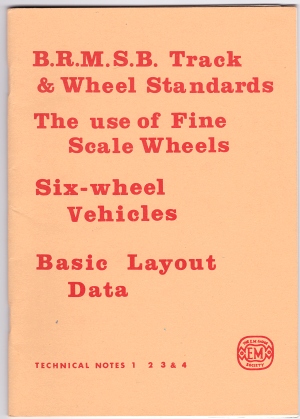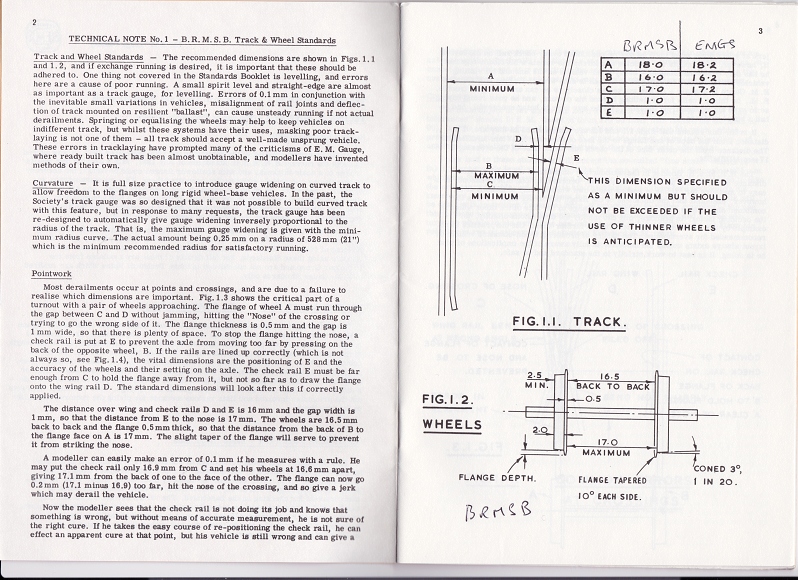What follows is my best recollection of events now 50 years ago. After all this time I confess my memory is less than perfect, and others may recall things differently.
In 1972 I joined the Railway Modellers Club of Worcester. They had an ideal model railway club premises -- a redundant village hall on the side of the cutting overlooking Norton Junction signal box, just outside Worcester. In there they were building a model of Bewdley on the Severn Valley Railway as it was in BR days before preservation. The survey work had been done while Bewdley was still in BR hands after services closed in January 1970.
By the standards of the time it was a very fine model, and was being built in EM Gauge. As other members joined this caused the Worcester area to become something of a hot-spot for EM modelling in the 1970s and 80s.
In the UK the vast majority of modelling in that size range is done at a scale of 4mm/ft (1:76.2), and not the 1:87 (H0) scale popular in the rest of the world. This applies to 00, EM and P4 gauges -- each having a different track gauge, but all using the same 4mm/ft modelling scale.
In July 1951 the British Railway Modelling Standards Bureau (BRMSB) had published its post-war standards for 00 and EM gauge, and when it was founded in 1955 the EM Gauge Society (EMGS) initially adopted the BRMSB standard for EM. This specified a track gauge of 18.0mm, flangeways 1.0mm, wheels having flanges 0.5mm thick at 16.5mm back-to-back.
Unfortunately locomotive driving wheels with such thin flanges were not generally available from the model trade at that time. So most EM modellers used BRMSB 00 wheels having flanges 0.7mm thick (e.g. Romford wheels, now Markits, and Hamblings wheels). At 16.5mm back-to-back this caused problems with the back-to-flange dimension through EM crossings, and with tight running on sharp curves.
To overcome those problems the EMGS made the decision in the 1960s to increase the track gauge and check gauge by 0.2mm to 18.2mm and 17.2mm respectively, and those remain the current EM standard. Here is the 1970 revision of the EMGS standards booklet:


While involved in the Bewdley layout I met the late Roy Miller of the EMGS, who told me about the idea of "EM minus 2", i.e. reducing the EM track gauge to 16.2mm, still with 1.0mm flangeways. He thought it would be a good way to show 00 modellers how much better their running would be if they changed to EM, using 1.0mm flangeways (instead of the 1.25mm flangeways for BRMSB 00), by demonstrating such running with their existing BRMSB 00-wheeled rolling stock. The back-to-back for BRMSB 00 was 14.5mm, i.e. 2.0mm less than EM, hence the idea of reducing the track gauge by exactly the same amount from 18.2mm to 16.2mm.
This idea would not have worked with the original BRMSB EM wheels on 18.0mm gauge, but with EM now using BRMSB 00 wheels it made obvious sense. If such wheels worked fine on 18.2mm gauge at 16.5mm back-to-back, they should work equally well on 16.2mm gauge at 14.5mm back-to-back. With a corresponding reduction in the check gauge from 17.2mm to 15.2mm. I'm fairly sure "EM minus 2" was Roy's own idea. Or it may have come from elsewhere in the EMGS. I am very sure it was Roy who told me about it.
In 1974 I began trading as 85A Models, manufacturing turnout kits and components, and pointwork made to order. Roy asked me to make up a crossover in "EM minus 2" which he could have on the EM stand at exhibitions. I turned some gauges and made one up and I was immediately impressed with its performance. So much so that I adopted 16.2mm gauge with 1.0mm flangeways for my standard 00 gauge products. Customers liked them and always came back for more. The narrower flangeways made it look much finer than any other 00 pointwork.
At that time RTR models were children's toys. Most serious 00 modellers were using the BRMSB "scale 00" wheels -- mostly on cast white-metal kits with Romford wheels and axles. RTR wheels were much too coarse for that, 00 modellers would re-wheel RTR models with Romford or Hamblings wheels if they used any RTR models at all.
When I was developing Templot in the 1990s I remembered "EM minus 2", so I included it in the list of pre-set gauges, and gave it the shorter more convenient name 00-SF ("00 special fine"). A few years later Dave Smith at the Carshalton club discovered it in Templot and asked me about it. He was having trouble getting good running on his club's new layout, and didn't want his members to be required to modify their wheel back-to-backs for the DOGA-Fine 00 standard. The upshot was that Dave tried 00-SF and discovered that all the modern RTR stock ran on it very well unmodified -- rather to his surprise, my surprise and indeed everyone's surprise. It appeared that in the intervening 25 years RTR wheels had improved somewhat.
So you can see that 00-SF was not actually designed to accept a mix of wheels, that was just a happy accident. It was originally designed for one specific wheel -- the BRMSB "scale 00" wheel of 1951, as typically represented by Romford and Hamblings driving wheels, and other wheels used by EM modellers such as the EMGS 1979 profile (similar to NMRA code 88 wheels, but with thinner flange thickness 0.6mm). These are now commonly called "kit wheels" in contradistinction to "RTR wheels" which generally now in the UK match the NMRA code 110 profile.
As a result of all that, and the growing interest in 00-SF which developed, Brian Tulley began supplying precision gauge tools for 00-SF on a non-profit basis. When demand outstripped his resources he handed production over to C&L.
Because the ability of RTR models to run on 00-SF came about as a happy accident, I have always tried to make clear that RTR wheels will need to be checked for compliance (back-to-back in the range 14.3mm to 14.4mm). More so than is necessary if running them on BRMSB 00 track (now called 00-BF in Templot and also known as DOGA-Intermediate). But in most cases modern RTR models are found to comply, run straight from the box on 00-SF, and you are unlucky if you find you have a rogue wheelset which doesn't. Older RTR models do not comply, and are not suitable for 00-SF.
It's important always to bear in mind that 00-SF was derived from EM, it's not a modification from RTR 00. So it shares the same EM conditions such as minimum radius, which for running lines should not be less than about 750mm or 30". 00-SF is not suitable for layouts with sharp train-set curves.
Martin.